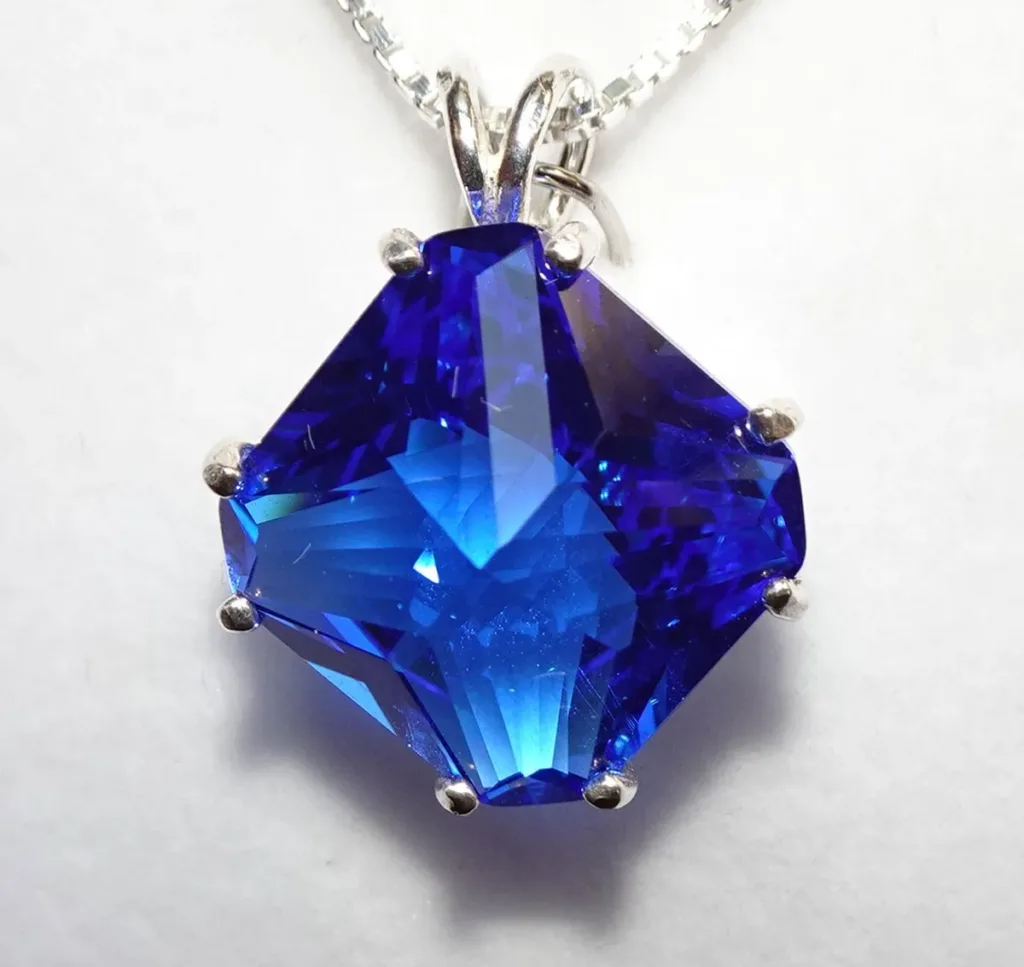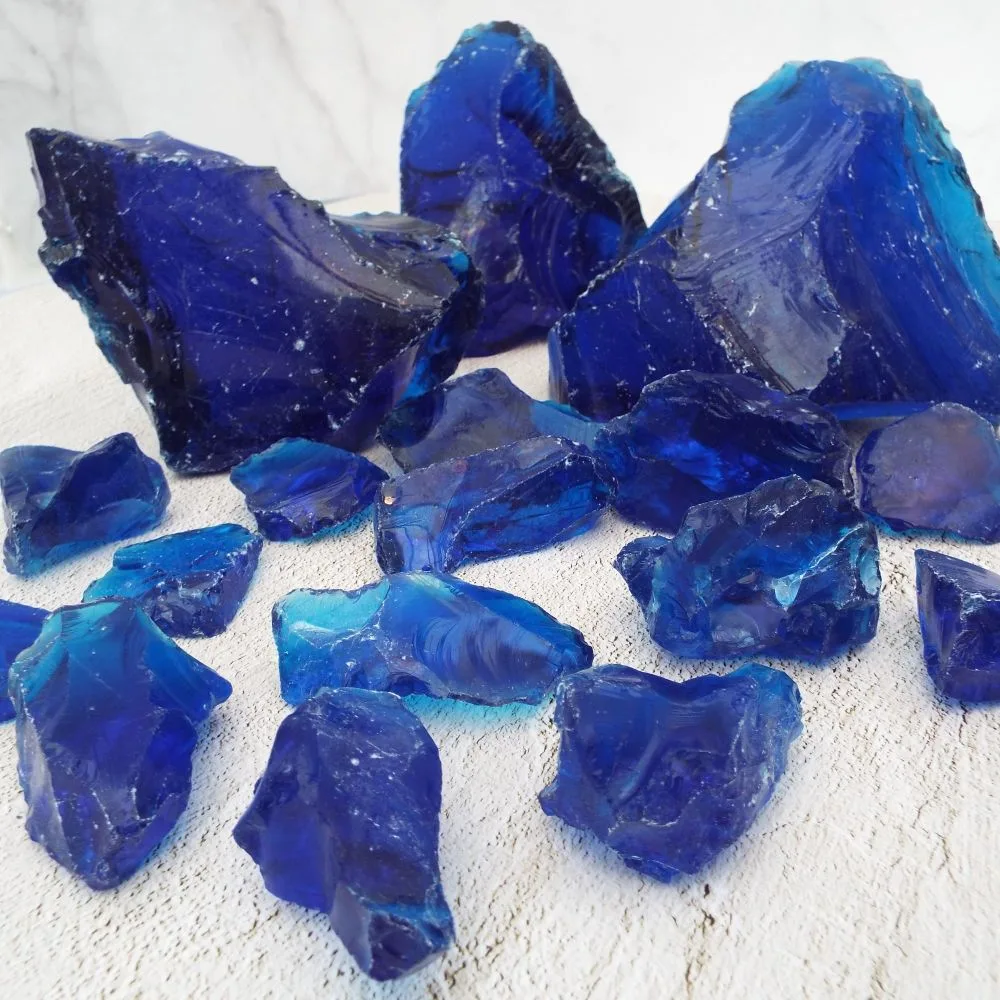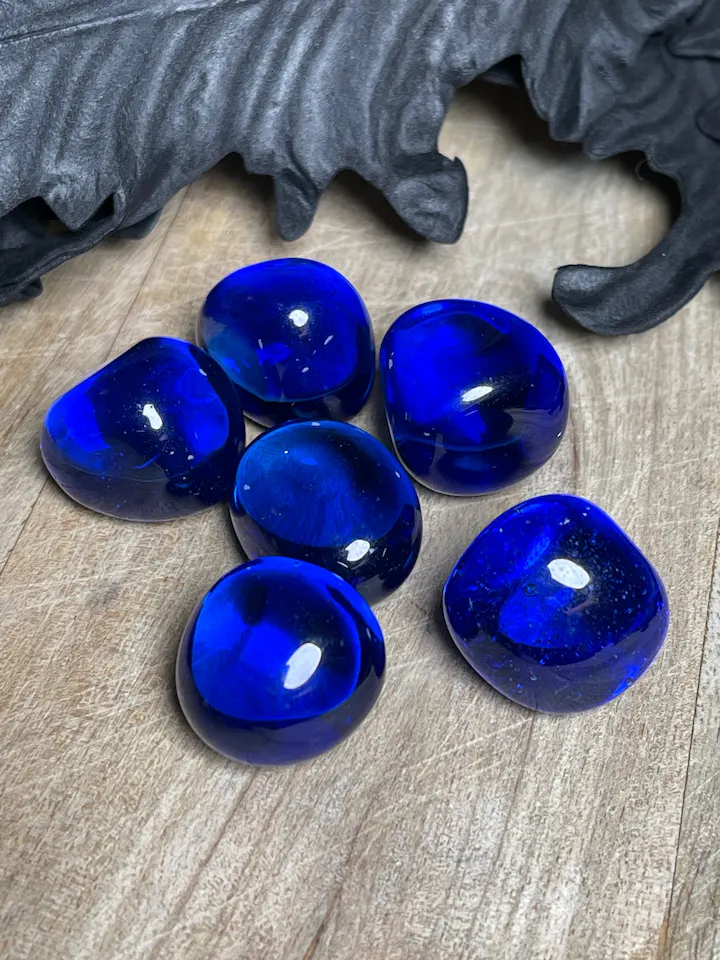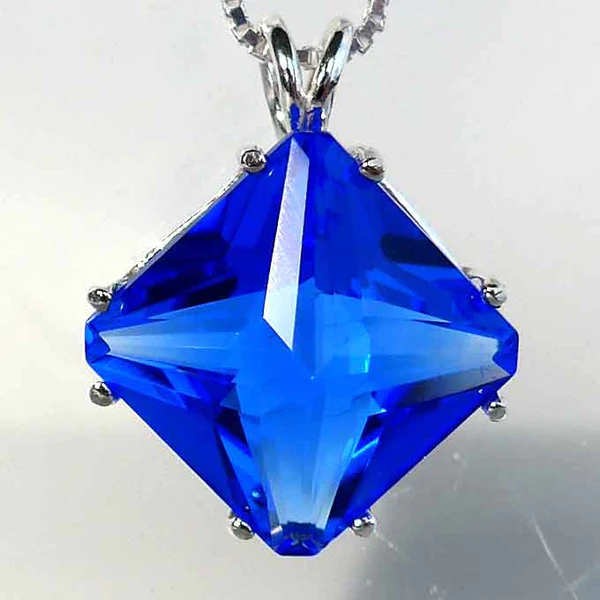Siberian Blue Quartz is a rare and highly sought-after variety of quartz known for its stunning blue coloration and remarkable clarity. It is a gemstone that has gained popularity among collectors and enthusiasts for its aesthetic appeal and unique geological origins.

Definition and Overview: Siberian Blue Quartz is a specific type of quartz crystal that derives its name from its distinctive blue coloration. This gemstone is characterized by its striking deep blue or blue-green hues, often resembling the vivid blue of a clear sky. What sets Siberian Blue Quartz apart is its natural color, which is caused by the presence of tiny blue needle-like inclusions of a mineral called dumortierite. These inclusions give the quartz its beautiful blue appearance and are highly prized by collectors and jewelry designers.
Siberian Blue Quartz is valued not only for its aesthetic appeal but also for its metaphysical properties. It is believed by some to have healing and spiritual attributes, promoting communication, mental clarity, and emotional balance.
Geological Formation: Siberian Blue Quartz owes its unique color and inclusions to its geological formation. This variety of quartz is typically found in the Siberian region of Russia, especially in the area around the Baikal Lake. The exact process of its formation involves the following key factors:
- Mineral Inclusions: The blue coloration of Siberian Blue Quartz is primarily attributed to the presence of dumortierite inclusions. These needle-like crystals form within the quartz during its growth, creating the distinctive blue appearance. The precise conditions necessary for dumortierite to form within the quartz matrix are rare, contributing to the gemstone’s scarcity.
- Hydrothermal Processes: Siberian Blue Quartz is often associated with hydrothermal processes, where hot water rich in minerals infiltrates cracks and cavities in the Earth’s crust. The dissolved minerals, including silicon dioxide (the primary component of quartz) and dumortierite, precipitate out of the solution as the temperature and pressure change, leading to the formation of these unique quartz crystals.

Historical Significance: While Siberian Blue Quartz may not have the same extensive historical significance as some other gemstones like diamonds or rubies, it has gained prominence in more recent years due to its beauty and rarity. The gemstone has become highly prized in the world of mineral and crystal collectors, as well as in the jewelry industry.
Siberian Blue Quartz has also found its place in the realm of metaphysical and spiritual practices. Some individuals believe it possesses healing properties and can aid in enhancing mental clarity, communication skills, and emotional balance. However, it’s important to note that these beliefs are not universally accepted, and any such claims should be approached with a critical mindset.
In summary, Siberian Blue Quartz is a captivating gemstone known for its natural blue coloration and dumortierite inclusions. Its geological formation in the Siberian region and its growing popularity among collectors and enthusiasts have made it a sought-after gemstone with both aesthetic and metaphysical appeal.
Physical Characteristics and Chemical Composition

Physical Characteristics:
Siberian Blue Quartz possesses a set of physical characteristics that make it distinctive and highly prized among gemstone enthusiasts. These characteristics include:
- Color: The most defining feature of Siberian Blue Quartz is its vibrant blue or blue-green coloration. This color can vary in intensity, ranging from a pale sky blue to a deep, almost royal blue. The blue color is caused by the presence of tiny needle-like inclusions of dumortierite within the quartz crystal.
- Clarity: Siberian Blue Quartz is known for its exceptional clarity. The quartz crystals are typically transparent or translucent, allowing light to pass through them easily. This high level of clarity enhances the gemstone’s brilliance and beauty.
- Luster: The luster of Siberian Blue Quartz is vitreous, meaning it has a glassy and shiny appearance when polished. This luster contributes to its overall visual appeal.
- Hardness: Like all varieties of quartz, Siberian Blue Quartz has a hardness of 7 on the Mohs scale. This hardness makes it relatively durable and suitable for use in jewelry.
- Transparency: The gemstone can exhibit various levels of transparency, from completely transparent to slightly cloudy or milky due to the presence of inclusions. In high-quality specimens, transparency is a key factor that influences its value.
- Crystal Structure: Siberian Blue Quartz typically forms in hexagonal prismatic crystals, which is a common crystal habit for quartz minerals. These crystals may have various sizes and shapes, depending on the specific growth conditions.
Chemical Composition:
Siberian Blue Quartz, like all quartz varieties, has a chemical composition primarily consisting of silicon dioxide (SiO2). In its purest form, quartz is composed of silicon (Si) and oxygen (O) atoms arranged in a three-dimensional crystal lattice structure. However, the distinctive blue color of Siberian Blue Quartz is not a result of its chemical composition but rather the presence of inclusions, mainly dumortierite, which is a separate mineral.
Dumortierite is a borosilicate mineral composed of aluminum, boron, silicon, and oxygen. It forms needle-like crystals that are typically blue to violet-blue in color. These dumortierite inclusions are responsible for the gemstone’s unique blue appearance. The exact chemical composition of Siberian Blue Quartz can vary slightly depending on the specific geological conditions in which it forms, but the primary component remains silicon dioxide (SiO2).
It’s important to note that while the chemical composition of Siberian Blue Quartz is similar to that of other quartz varieties, it is the presence of these rare inclusions that distinguishes it and gives it its coveted color and value.
Occurrence and Mining

Siberian Blue Quartz is primarily found in the Siberian region of Russia, especially in the vicinity of Lake Baikal. Its occurrence and mining process are unique and distinct due to the specific geological conditions of the region. Here’s an overview of the occurrence and mining of Siberian Blue Quartz:
Occurrence:
- Siberian Region: As the name suggests, Siberian Blue Quartz is primarily associated with Siberia, Russia. Lake Baikal, one of the world’s deepest and oldest freshwater lakes, is a notable location for the occurrence of this gemstone. The surrounding geological formations and hydrothermal processes in this region have created suitable conditions for the formation of Siberian Blue Quartz.
- Veins and Vugs: Siberian Blue Quartz is typically found within veins and vugs (cavities or openings) in host rocks. These cavities provide the necessary space for the quartz crystals to grow. The blue color of the quartz is a result of the inclusion of dumortierite, which also forms within these cavities. Dumortierite-rich veins and vugs are where miners often discover high-quality specimens of Siberian Blue Quartz.
Mining:
Mining Siberian Blue Quartz involves a combination of geological exploration and extraction techniques. Here’s an overview of the mining process:
- Exploration: Geological surveys and exploration are conducted to identify potential locations where Siberian Blue Quartz may be found. Miners often rely on geological maps, historical data, and visual cues to locate promising areas.
- Accessing Deposits: Once a potential deposit is identified, miners access it through tunnels, shafts, or open-pit mining, depending on the location and size of the deposit. Mining methods can vary, but safety and minimizing environmental impact are key considerations.
- Extraction: Miners extract the quartz-bearing material from the host rock, which often contains Siberian Blue Quartz crystals. Special care is taken to avoid damaging the crystals during extraction.
- Processing: Extracted material is then transported to processing facilities where it undergoes several steps to separate the quartz crystals from the surrounding rock. This may involve crushing, grinding, and sorting processes.
- Sorting and Grading: After the initial processing, the quartz crystals are sorted based on their quality, size, and color. High-quality Siberian Blue Quartz specimens are selected for further processing and eventual sale in the gemstone market.
- Cutting and Polishing: Gemstone cutters and lapidaries shape the Siberian Blue Quartz crystals into desired forms, such as faceted gemstones or cabochons. The cutting and polishing processes enhance the gemstone’s beauty and luster.
- Market Distribution: Once cut and polished, Siberian Blue Quartz is distributed to gem dealers, jewelry manufacturers, and collectors worldwide.
It’s worth noting that Siberian Blue Quartz is considered a relatively rare and collectible gemstone, so mining operations may not be as extensive as those for more commonly found gemstones. Additionally, the gemstone’s scarcity and the environmental regulations in the region often mean that extraction is carried out with care and consideration for the local ecosystem.
Siberian Blue Quartz Uses

Siberian Blue Quartz, prized for its stunning blue coloration and clarity, has a variety of uses, both in the world of gemstones and in the realm of metaphysical and spiritual practices. Here are some common uses of Siberian Blue Quartz:
1. Jewelry: Siberian Blue Quartz is often cut and polished into gemstones and used in jewelry design. Its vibrant blue color and high clarity make it an attractive choice for rings, earrings, necklaces, pendants, and bracelets. The gemstone’s unique appearance can add a touch of elegance and uniqueness to jewelry pieces.
2. Collectibles: Siberian Blue Quartz is highly sought after by mineral and gemstone collectors. Specimens with exceptional color, clarity, and size are often collected for their rarity and aesthetic appeal. Collectors may acquire rough crystals, cut gemstones, or even entire mineral specimens.
3. Healing and Metaphysical Practices: In the realm of metaphysical and spiritual practices, Siberian Blue Quartz is believed by some to possess various healing and energy-balancing properties. It is thought to:
- Enhance Communication: It is believed to promote clear and effective communication, making it valuable for individuals seeking to improve their verbal and written communication skills.
- Mental Clarity: Siberian Blue Quartz is associated with mental clarity and focus. It is used by some for meditation and concentration exercises.
- Emotional Balance: Some people use Siberian Blue Quartz to help balance emotions, reduce stress, and promote a sense of inner peace and tranquility.
- Chakra Work: In energy healing practices, Siberian Blue Quartz may be associated with specific chakras, often the throat chakra (for communication) and the third eye chakra (for intuition and mental clarity).
4. Decorative Pieces: Beyond jewelry, Siberian Blue Quartz is also used in decorative pieces, such as sculptures, carvings, and home decor items. The gemstone’s beautiful blue color and transparency make it an attractive choice for enhancing the aesthetics of various objects.
5. Meditation and Spiritual Tools: Some individuals use Siberian Blue Quartz crystals as meditation aids or as part of their spiritual practices. The calming and focusing properties attributed to the gemstone make it a suitable choice for these purposes. Practitioners may hold or place the crystals near them during meditation sessions.
6. Crystal Healing Layouts: In crystal healing practices, Siberian Blue Quartz may be incorporated into layouts or grids on the body or in a healing space. It is believed to facilitate energy flow and balance.
7. Education and Research: Scientists and geologists may use Siberian Blue Quartz specimens for research purposes, studying its unique inclusions and geological formations to better understand the Earth’s processes.
It’s important to note that while Siberian Blue Quartz has gained popularity for its metaphysical and spiritual uses, these claims are not universally accepted in scientific or medical contexts. The perceived benefits of this gemstone are often based on anecdotal experiences and belief systems. Individuals interested in using Siberian Blue Quartz for healing or spiritual purposes should do so with an open but critical mind and seek guidance from experienced practitioners if needed.




































